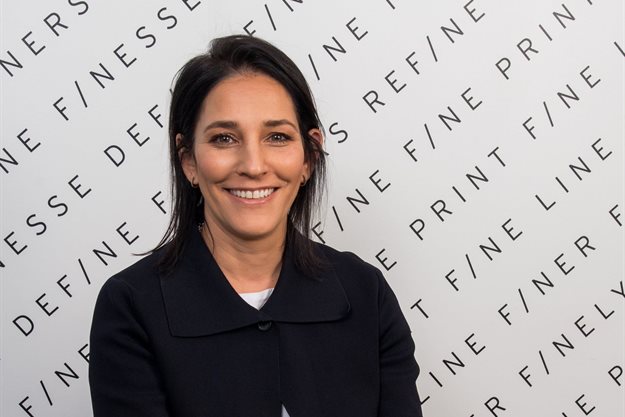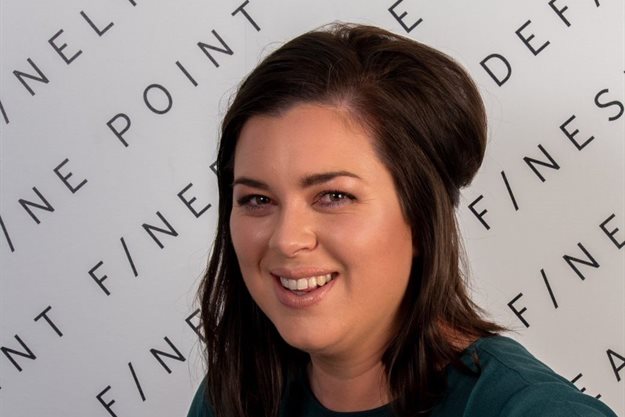Mandi Fine of strategic communications consultancy, F/ne Group Global, recently published an article on corporates needing to rethink CSI, talking to the need to change their approach from treating it as a tick-box exercise to entrenching it into their business models and future business plans.
To delve deeper into her understanding and views on the subject based on 20 years in the business of healthcare and doing good, I interviewed Fine and her business partner, Megan Nethercote, to find out how to go about integrating CSI into your business and why giving what you’re good at to elevate non-profit organisations (NPOs) is the key to unlocking their “hidden missing magic”.

Mandi Fine, founder and CEO of F/ne Group Global.
When Fine started her strategic marketing business 20 years ago, HIV/AIDS was the biggest healthcare crisis facing SA. She said they believed at the time that if they were going to be a credible entity in healthcare communications in the country, they needed to do their part in helping NPOs that supported HIV and AIDS patients and/or orphans.
They took on one as their CSI project, but in the traditional sense. They realised very early on in their journey with CSI that although they could give NPOs money, they were better placed to give them communication skills and empower them to profile themselves to highlight their cause, just as F/ne Group does for its corporate clients. “We realised that if we do for our CSI projects what we do for our corporate clients, we can add much more value by elevating their cause and profiling them. We knew that good communication would give them much more value than funds alone,” says Fine.
“So very early on it became a principle of F/ne Group in the CSI realm to give what we’re good at, and that is the principle that we founded our new non- profit organisation [F/ne For Good] on. It is about giving what we’re good at, not just giving,” explains Fine.
As such, to give what they’re good at has become core to their company culture. Nethercote, who joined the company 10 years ago, says this culture is twofold. She says it’s hard not to align your core morals and values as an organisation to the industry you work in and that working in healthcare, you’re dealing with some of the most pressing news in the country. Secondly, that as a small organisation, you need to get creative to make an impact because it’s just not possible to match the massive cheques afforded by the big corporates.

Megan Nethercote, strategy director at F/ne.
From a culture perspective, this also empowers your employees, because they are the equity. “They’re physically the ones writing the strategy and doing the work, so there’s a real closeness to, ‘Hey, I did that. A part of me went into helping out.’ Doing work for a worthy cause should be very much a part of your day job,” adds Nethercote.
F/ne Group prioritises its non-profit clients in the same way as it does its paying clients. This was a large reason for formalising this type of work into F/ne for Good, says Nethercote. They have what they call the ‘F/ne For Good Friends Network’ where they call upon their partners and their network that they work with in their corporate business, and there is someone who coordinates all of the CSI projects in their entirety and runs them as a functioning entity within F/ne Group.
Even though they don’t bill these clients, they have financial records on what they’ve spent on elements like PR, writing, design, strategy and web development. “It’s important to have a formalised process for CSI projects as you would with any corporate client where you track time and recon each job,” says Fine.
She adds that up until they formalised F/ne For Good, selecting which NPOs to support had very much been around organisations that were close to their hearts. Now they have an advisory board to vet their projects on a formal scale of impact and efforts, deciding how they invest their time, money and resources. “We had our first advisory board meeting at the end of last year and we’re choosing our projects for 2020 now, at the end of the month, on a very rigorous, actuarial, formalised process."
CSI is generally seen as a separate entity, says Nethercote.
Corporates generally have a CSI individual who probably doesn’t sit on the executive board level. It is a tick box exercise for B-BBEE and while some corporates may build this into their culture and into their way of doing things for the year, it’s very much still siloed in an organisation.
She believes that CSI should be an investment, that what you put in, you get back into your brand, into your business or into your bottom line and that it must be very much part of your business strategy, totally integrated into what you do.
Social impact investing is a new term that’s floating around, she adds. “People are starting to realise that you need to measure your CSI activities. There’s a way to integrate this into your business model where you’re creating huge amounts of value for the client, while at the same time, doing good for your business.”
Purpose marketing is another buzzword and in the case of healthcare, purpose is inextricably linked. “For me, purpose has never been an add-on to the brands and space that we play in. It has been a core function. In a way, I feel that healthcare has almost led the way in terms of some of the things that have become mass-market appeal, when you talk about ‘purpose-led’ and things like that.”
Fine adds: “We often get stuck in the rational, in how something works, and in the efficacy and clinical benefit. Your organisation could be the most purposeful organisation on the planet in terms of what it does and still get stuck in the very actuarial, clinical, rational spaces.”
We have to elevate our clients into why we’re doing this, and it’s so much easier to bring people on a journey internally and create culture, motivation and healthy organisations when you work from a purpose-driven space.
“A brand that has done very well with purpose-led marketing is Dettol,” says Nethercote. “For many years before purpose-led marketing was a buzzword, Dettol has taken a stand for handwashing. The tagline for the brand is: ‘Be 100% Sure’, and we know in Africa that the spread of so many diseases can be solved just by rigorous and regular handwashing. They’ve had handwashing days and put money towards projects that help in that space, and there is an absolutely beautiful alignment between what their brand does and the purpose-driven campaigns that they’re involved in,” says Nethercote.
“Where brands get it wrong, for me, is when they try to support an array of different causes, which aren’t necessarily a good fit for their brand. The service offering has to align with the cause. You can’t just jump on whatever the newest purpose-driven bandwagon is.”
In order to get CSI right, collaboration is absolutely essential.
Holding onto your IP so your competitors don’t see what you’re doing is not going to serve you, yet this mentality still plays out at both a corporate and NGO-level. It’s still such a competitive environment, yet when you start to work with other organisations that have specific strengths and you know your own key strengths and where you can support each other, the sum is so much greater than the parts. We’re seeing this play out in a non-profit and a corporate space and it’s the way of the future – leverage people for what they are good at, give what you’re good at, do what you’re good at and don’t do what you’re not.
Having worked in the industry for 20 years, Fine senses a need to collaborate in a way that she’s never felt before. “The public and private sector know that they need each other – the private sector needs the public sector for scale, access and impact and the public sector needs the private sector for tech, data, skills and leadership expertise, and there’s a sense of being able to do so much more together. The missing link is the non-profit organisation."If the private and public sector can elevate non-profits by using the knowledge and passion of the community and the IP that sits within the organisation itself, then you’ve got a magic mix. We don’t realise the strength and potential that sits in small non-profits in our country and how, if we just empower them, give them skills, access, and the right network we can change our country," concludes Fine.
To find out more about F/ne for Good, visit FineGroupGlobal.com and follow them on LinkedIn, Facebook and/or Twitter.
























































